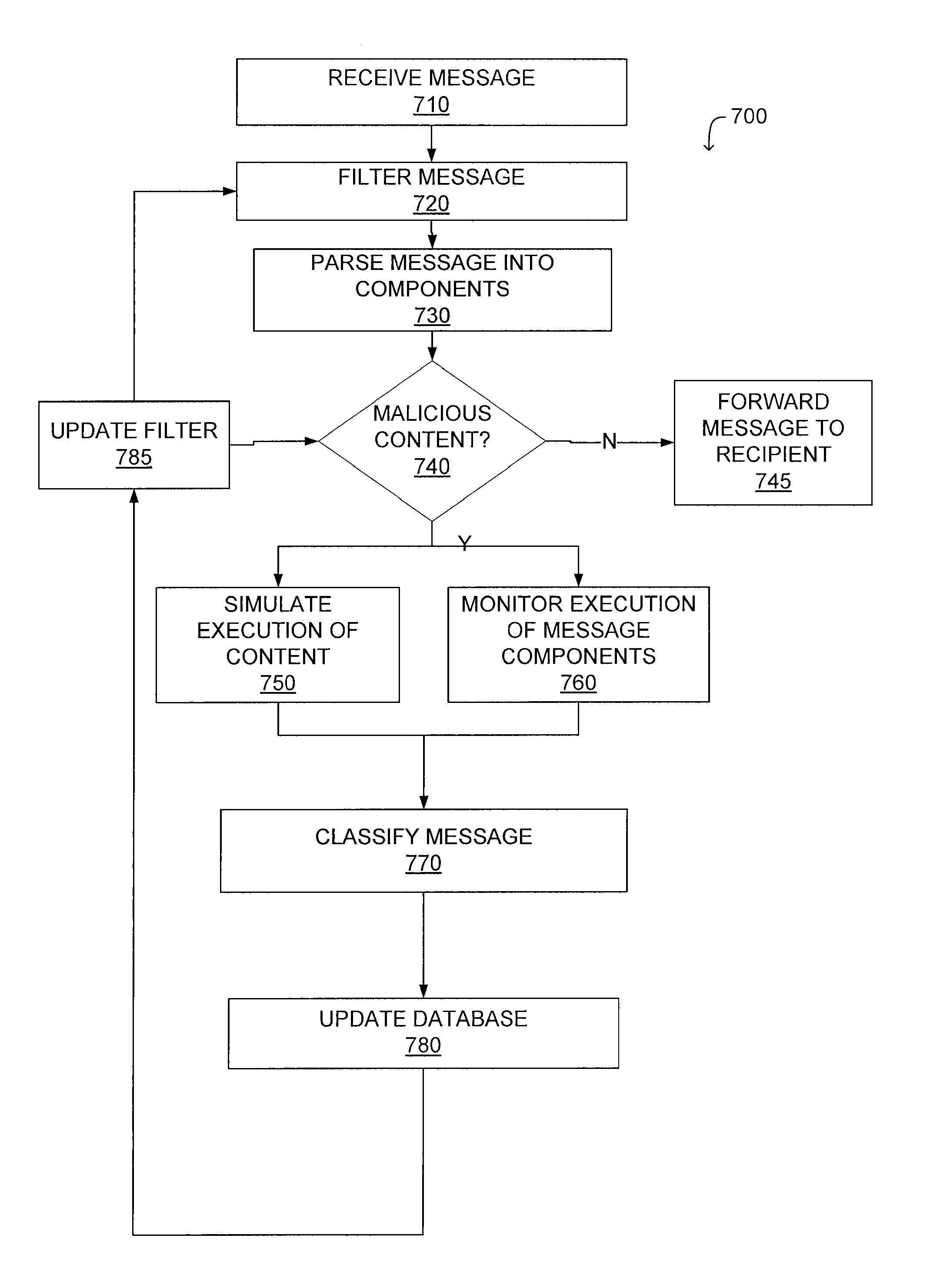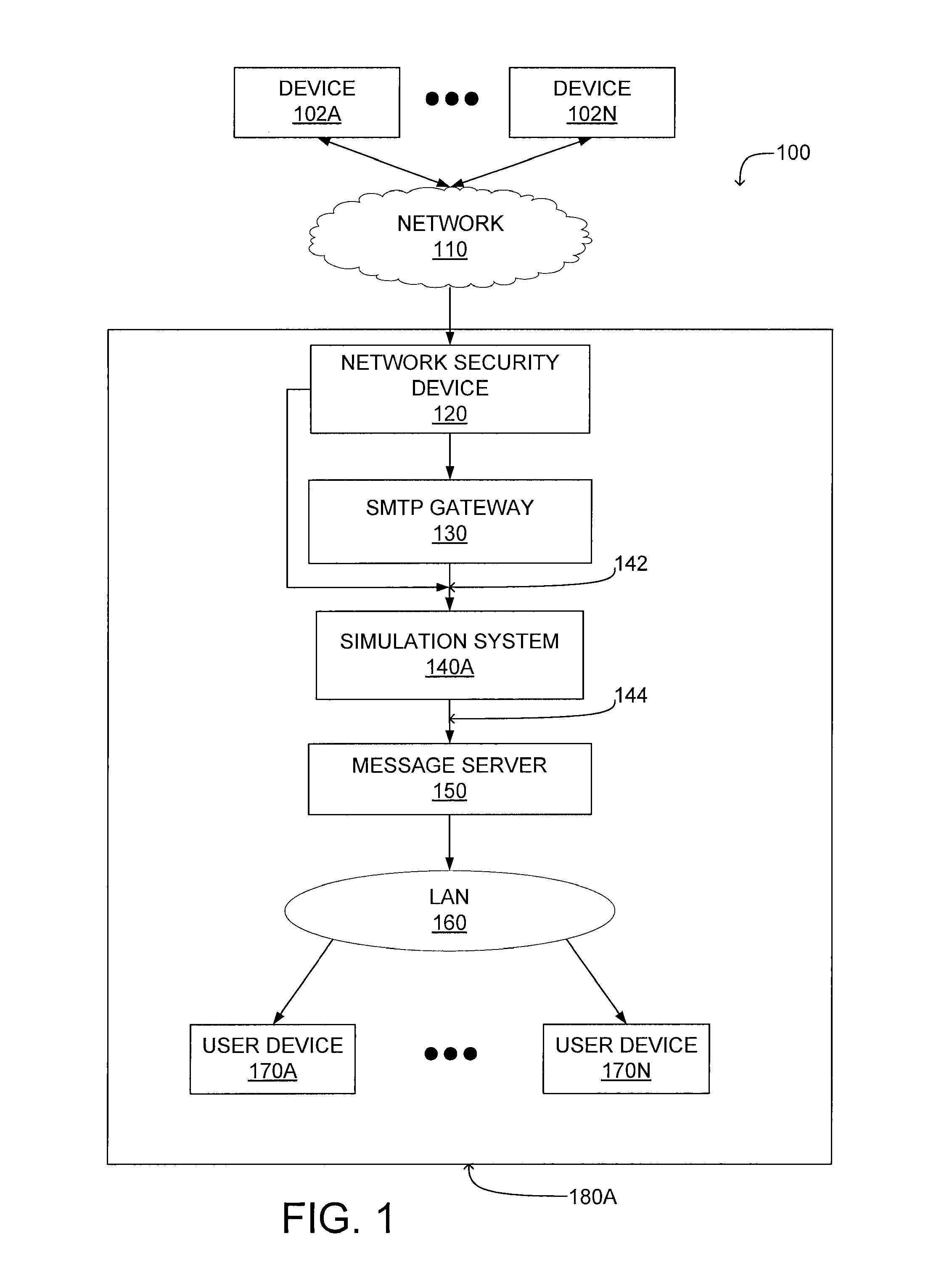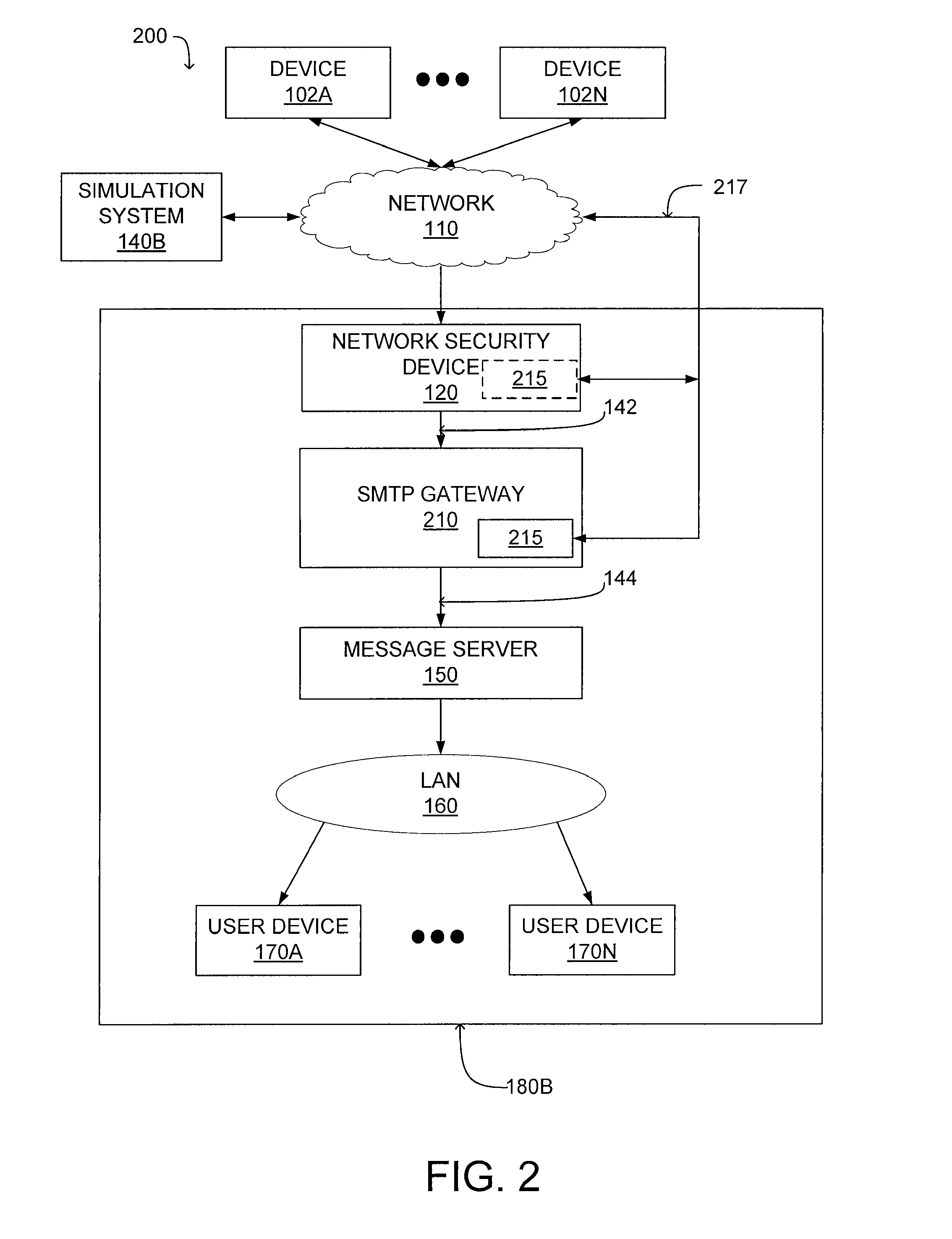System and method for malicious software detection in multiple protocols
a malware detection and protocol technology, applied in the field of malicious software detection, can solve the problems of inability to detect malicious code embedded in the message, filtering also inability to detect these blended threats, and conventional malware detection techniques cannot process embedded urls and active conten
- Summary
- Abstract
- Description
- Claims
- Application Information
AI Technical Summary
Benefits of technology
Problems solved by technology
Method used
Image
Examples
first embodiment
[0031]the simulation system 140A receives electronic messages from the SMTP gateway 130 via signal line 142 and transmits at least a subset of the electronic messages to the message server 150 via signal line 144. In an embodiment, the simulation system 140A receives electronic messages from the network security device 120 via signal line 142, allowing the simulation device to receive multiple types of electronic messages, such as HTTP requests, FTP requests, TCP / IP packets, in addition to e-mails, text messages or other messages processed by the SMTP gateway. The simulation system 140A determines whether content associated with a received electronic message is malicious. For example, the simulation system 140A determines whether files attached to an e-mail are malicious or whether code embedded in an e-mail or chat message is malicious. This allows the simulation system 140A to identify content associated with an electronic message that is likely to adversely affect a device 102 or...
second embodiment
[0035]FIG. 2 shows a block diagram of a distributed computing system 200 for detecting malicious content associated with an electronic message according to the invention. The distributed computing system 200 includes one or more devices 102A-N coupled to a network 110. The network 110 communicates electronic messages between various devices 102A-N, an enterprise system 180B and a simulation system 140B.
[0036]The devices 102A-N, user devices 170A-N and network 110 used by the distributed computing system 200 have been described above in conjunction with FIG. 1. The enterprise system 180B used by the distributed computing system 200 includes a network security device 120, a message server 150, a LAN 160 and one or more user devices 170A-N, which also have all been described above in conjunction with FIG. 1.
[0037]However the enterprise system 180B includes a modified SMTP gateway 210 including an agent 215 which examines received electronic messages for malicious content. Alternatively...
PUM
 Login to View More
Login to View More Abstract
Description
Claims
Application Information
 Login to View More
Login to View More - R&D
- Intellectual Property
- Life Sciences
- Materials
- Tech Scout
- Unparalleled Data Quality
- Higher Quality Content
- 60% Fewer Hallucinations
Browse by: Latest US Patents, China's latest patents, Technical Efficacy Thesaurus, Application Domain, Technology Topic, Popular Technical Reports.
© 2025 PatSnap. All rights reserved.Legal|Privacy policy|Modern Slavery Act Transparency Statement|Sitemap|About US| Contact US: help@patsnap.com



